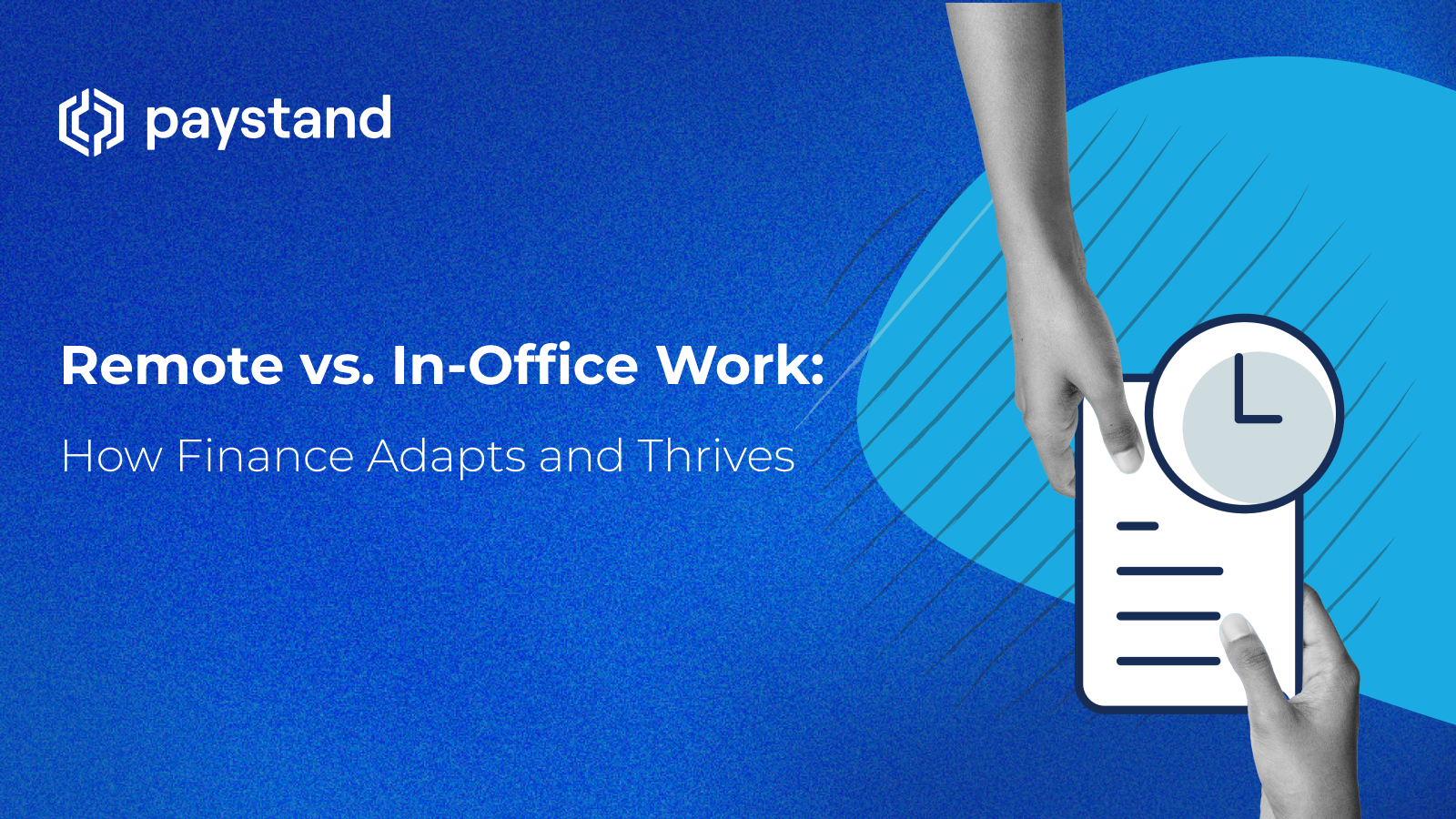Remote vs. In-Office Work: How Finance Adapts and Thrives

Table of Contents
- What does remote work look like in finance?
- Comparing remote work and in-office models
- Overcoming implementation challenges
- Take the next step in the future of finance
Key Takeaways
- Advancements in cloud technology, high-speed internet, and the growing demand for flexible work options have enabled remote work in finance.
- In-office work strengthens collaboration, security, and professional development.
- Financial institutions must balance the benefits of the different work models to empower employees and ensure long-term success.
- Key challenges of remote work include security risks, communication issues, and maintaining regulatory compliance, which can be mitigated through digital security tools and effective communication strategies.
The financial services sector has experienced significant changes in how work is done. Traditionally, the office was the primary workspace, where employees performed their roles in a centralized environment. However, with the global shift brought on by the COVID-19 pandemic, remote work became necessary, highlighting its numerous advantages, such as flexibility, reduced commute times, and an improved work-life balance.
In the US alone, remote work is expected to reach 36.2 million by 2025, a substantial increase from pre-pandemic levels. This shift toward remote work allows financial institutions to rethink employee engagement and productivity approaches.
Are you curious about how financial services navigate these evolving work dynamics? Dive deeper into the discussion and explore how Paystand can help businesses thrive in remote and in-office environments.
What Does Remote Work Look Like in Finance?
Remote work in the financial sector has evolved from a fringe concept to a mainstream practice. It encompasses various arrangements, ranging from fully remote roles, where employees rarely visit the office, to hybrid models combining remote and on-site work.
Several key factors have fueled the transition towards increased remote work in finance:
- Advancements in cloud technology have enabled financial institutions to store and access sensitive data remotely and securely.
- The proliferation of high-speed internet has further facilitated remote work in finance.
- A growing demand for flexible work options has driven the adoption of remote work in finance.
The transition to remote work in finance has brought about significant benefits for financial institutions. According to recent studies, 16% of businesses worldwide have fully transitioned to remote operations, with the financial sector at the forefront of this shift.
Comparing Remote Work and In-Office Models
Each work model has its own set of benefits. Remote work often increases productivity, has fewer distractions, and lowers costs. Workers enjoy more autonomy, contributing to improved morale and flexibility.
Conversely, in-office work strengthens collaboration, enhances security, and fosters professional development through direct mentorship and relationship-building.
| Remote Work | In-Office Work | |
|---|---|---|
| Productivity | Increased productivity due to fewer distractions | Enhanced collaboration and brainstorming |
| Autonomy | Workers enjoy more autonomy, leading to improved morale and flexibility | Direct mentorship and relationship-building foster professional development |
| Costs | Lower costs associated with remote work | Higher costs associated with maintaining an office space |
| Collaboration | Limited opportunities for face-to-face collaboration | Strengthened collaboration through in-person interactions |
| Security | Potential security risks associated with remote work | Enhanced security measures in an office environment |
| Flexibility | Remote work offers greater flexibility in terms of work location and hours | Less flexibility in terms of work location and hours |
For financial institutions, balancing these models can empower their workforce and drive long-term success.
Overcoming Implementation Challenges
Whether managing remote teams or in-office workflows, businesses must navigate common challenges like security, communication, and compliance.
For remote work models, businesses must implement robust digital security measures to protect sensitive data and prevent unauthorized access. This includes utilizing encryption technologies, implementing strong password policies, and providing regular security training for employees. Additionally, they must consider investing in tools for secure remote access to corporate networks and resources.
In contrast, in-office teams benefit from physical access controls but must address communication and collaboration challenges. Effective communication channels, such as video conferencing, instant messaging, and project management tools, are essential for fostering teamwork and ensuring all team members are on the same page.
Compliance is another critical consideration for businesses, regardless of their work arrangements. Financial institutions, in particular, are subject to strict regulatory requirements. To ensure compliance, businesses must invest in technology and infrastructure that supports accurate record-keeping, data retention, and reporting.
Take the Next Step in the Future of Finance
Leaders who embrace flexibility and employee empowerment will thrive as the financial services sector adapts to new work models. At Paystand, we provide digital tools to help businesses streamline their operations, whether their teams work remotely or in the office.
To explore the future of finance more, download the first chapter of our ebook, The Rise of Self-Service, here. Discover how modern finance is transforming through self-service tools and automation.




